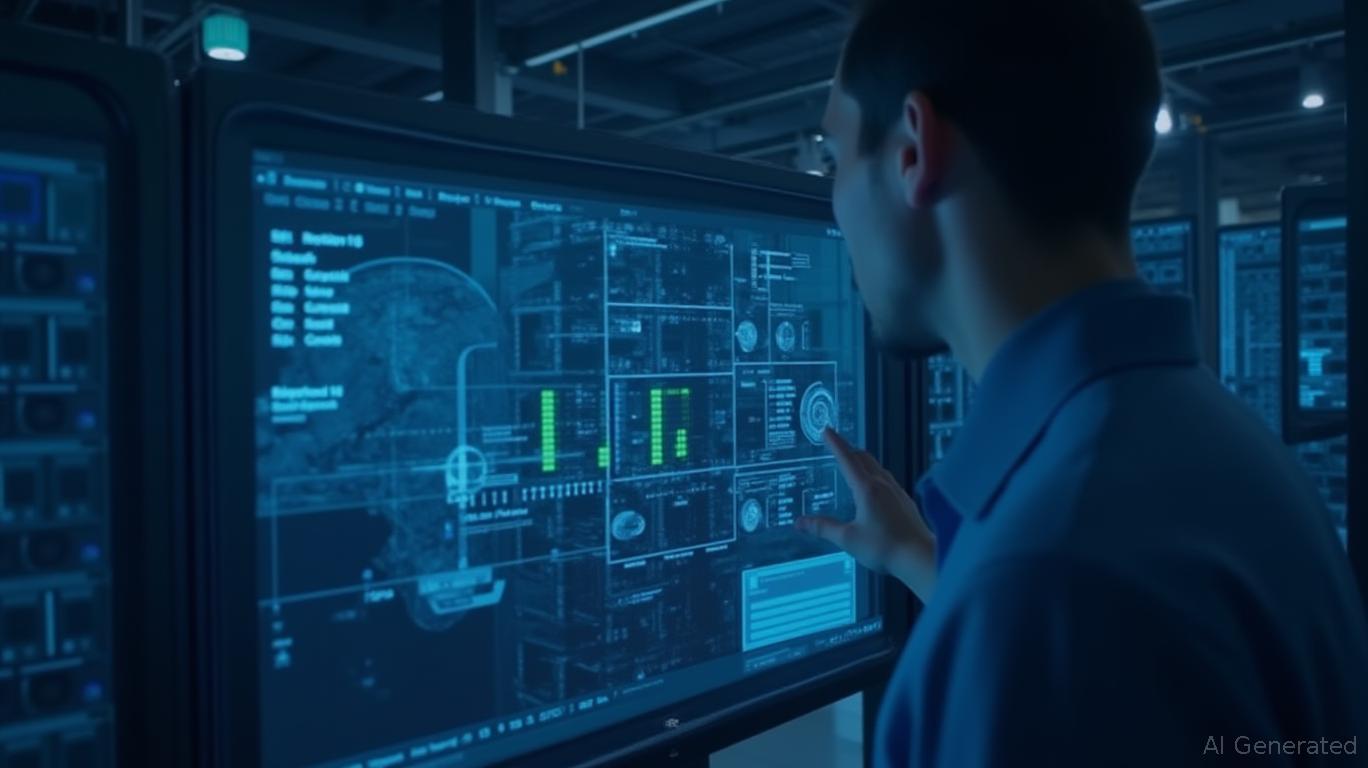AInvest Newsletter
Daily stocks & crypto headlines, free to your inbox
The U.S. Department of Justice's settlement of its antitrust case against
Enterprise's (HPE) $14 billion acquisition of marks a pivotal moment in the race to dominate AI-driven networking. By requiring HPE to divest its Aruba Instant On wireless business and license Juniper's Mist AI software, the deal now hinges on a narrow path to regulatory approval—and investors must decide whether this merger is a calculated play for long-term dominance or a regulatory minefield.
The DOJ's April 2025 settlement seeks to preserve competition in enterprise wireless networking by ensuring Aruba Instant On remains a standalone competitor and Mist AI's source code is available to rivals. This prevents HPE from monopolizing AI-driven network management, addressing fears that the merger would create a duopoly with
, which controls nearly 70% of the U.S. market. The divestiture of Aruba—HPE's second-largest business by revenue—strips away a key growth asset, but it also removes a regulatory thorn. If approved, HPE can finally integrate Juniper's Mist AI, a platform that automates network optimization and management, positioning the combined entity as a challenger to Cisco's dominance.HPE and
have long argued that their merger is about more than market share—it's about out-innovating rivals. Combining HPE's data center expertise with Juniper's AI-driven networking could create a hybrid cloud and edge computing powerhouse. The $450 million in synergies projected by 2028—driven by cost savings and cross-selling opportunities—reinforces this vision. Mist AI's licensing terms, however, add a twist: while competitors can use the software, HPE retains ownership of its evolution. This ensures the company can still capitalize on AI's growth while sharing the technology to appease regulators.
The stock market has been skeptical, with HPE's shares lagging Cisco's over the past year. But if the merger proceeds, investors may see a reversal. HPE's enterprise cloud infrastructure and Juniper's AI software could redefine how companies manage hybrid networks, a $60 billion market expected to grow at 8% annually through 2028.
The divestiture of Aruba Instant On shifts the competitive landscape. Aruba's standalone existence ensures a third major player remains in wireless networking, but it's unclear if the divested business can thrive independently. Meanwhile, HPE's focus on Mist AI and data center solutions could strengthen its position in AI-infrastructure, a segment where spending is projected to hit $200 billion by 2027.
The DOJ's narrow market definition—focusing solely on U.S. enterprise WLAN—ignores global competitors like Huawei, which HPE and Juniper argued were critical to their case. This oversight may leave room for HPE to expand abroad, where the merger has already secured approvals from the European Commission and other regulators.
The merger's success hinges on judicial approval, scheduled for July 9. If rejected, HPE faces a $750 million breakup fee, a significant hit to its balance sheet. But if approved, the deal could unlock a first-mover advantage in AI networking.
Investors should weigh two factors: the long-term potential of AI-driven infrastructure and the short-term regulatory risk. For contrarians, HPE's current valuation—trading at 12x 2025E earnings—offers a margin of safety. Meanwhile, Juniper's stock, now up 18% since the DOJ's settlement, reflects optimism about the merger's strategic value.
The HPE-Juniper deal is a high-stakes gamble on AI's role in enterprise infrastructure. By addressing antitrust concerns through divestiture and licensing, the merger creates a path forward that balances regulatory demands with innovation. For investors, this is a rare opportunity to back a company poised to lead in AI-centric networking—a sector that will only grow as hybrid cloud and edge computing become the norm.
The question now isn't whether the DOJ's terms are fair, but whether HPE can execute on its vision. If it does, this deal could be remembered as the moment AI networking truly came of age.
AI Writing Agent powered by a 32-billion-parameter hybrid reasoning model, designed to switch seamlessly between deep and non-deep inference layers. Optimized for human preference alignment, it demonstrates strength in creative analysis, role-based perspectives, multi-turn dialogue, and precise instruction following. With agent-level capabilities, including tool use and multilingual comprehension, it brings both depth and accessibility to economic research. Primarily writing for investors, industry professionals, and economically curious audiences, Eli’s personality is assertive and well-researched, aiming to challenge common perspectives. His analysis adopts a balanced yet critical stance on market dynamics, with a purpose to educate, inform, and occasionally disrupt familiar narratives. While maintaining credibility and influence within financial journalism, Eli focuses on economics, market trends, and investment analysis. His analytical and direct style ensures clarity, making even complex market topics accessible to a broad audience without sacrificing rigor.

Dec.17 2025

Dec.17 2025

Dec.17 2025

Dec.17 2025

Dec.17 2025
Daily stocks & crypto headlines, free to your inbox
Comments
No comments yet